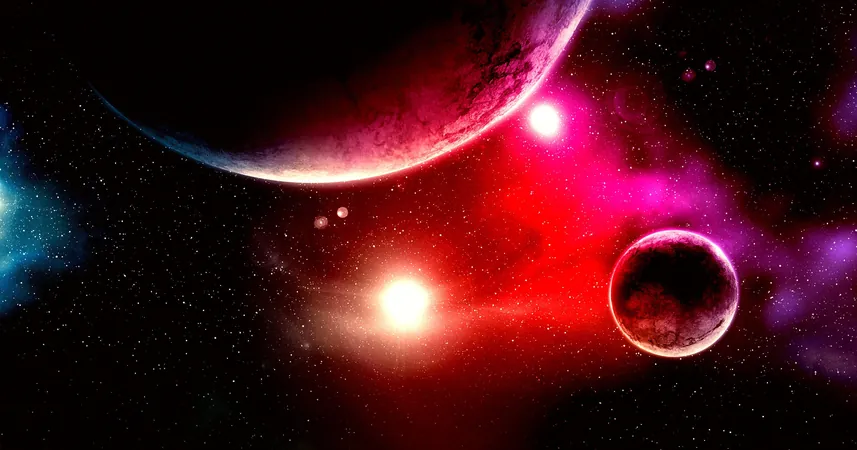
Is This Mysterious Object the Key to Creating New Planets? Scientists Say It Might Be!
2025-09-18
Author: Wei Ling
Astronomers Are Buzzing Over a Wild New Discovery!
Astronomers are buzzing with excitement after spotting a unique interstellar object zooming through our solar system. Initially observed earlier this year, this enigmatic visitor has piqued interest, prompting scientists to unleash powerful telescopes to uncover its secrets.
Comet or Alien Artifact? The Debate Rages On!
While many scientists agree that this object is likely an unusual comet, some have sparked speculation, suggesting it may be a remnant from an advanced extraterrestrial civilization. Though NASA has dismissed this theory as a fanciful notion, the object remains an intriguing topic of discussion.
Could This Object Be a Planet Creation 'Seed'?
In a groundbreaking paper presented at a recent science congress in Germany, astrophysicist Susanne Pfalzner put forth a provocative idea: objects like 3I/ATLAS could actually serve as 'seeds' for forming massive planets when captured in the dust and gas disks surrounding young stars.
"Interstellar objects may jump-start planet formation, especially around higher-mass stars," Pfalzner explained, suggesting that these cosmic travelers might hold the key to understanding how planets form over millions of years.
The Current Puzzle of Planet Formation!
Traditionally, it's believed that smaller particles clump together to form larger celestial bodies—a process known as accretion. However, this doesn't quite explain the existence of gas giants orbiting young stars, where simulations show that material tends to bounce off rather than merge.
Interstellar Objects Could Change Everything!
Pfalzner's models propose that the gravitational pull of accretion disks around young stars could effectively ensnare countless interstellar objects, similar in size to the first known interstellar visitor, 'Oumuamua', which measured about 330 feet long.
"Interstellar space could deliver ready-made seeds for the next generation of planets," she said.
Explaining the Rarity of Gas Giants!
This groundbreaking theory may also elucidate why gas giants like Jupiter are rare in cooler, smaller 'M dwarf' star systems, where conditions for planet formation are less favorable. In contrast, these massive planets are much more prevalent around larger stars, which have limited time to form planets.
The Implications of This Discovery!
If enough interstellar objects exist in the cosmos, their added mass could significantly accelerate the formation of gas giants. Pfalzner remarked, "Higher-mass stars efficiently capture interstellar objects, making planet formation quicker and easier around them." This quick formation is precisely what observational data corroborates.
The Quest for More Answers!
Pfalzner and her team are now diving deeper into how many of these captured interstellar objects could morph into planetary bodies and how they distribute across the accretion disks of distant stars. The potential implications could reshape our understanding of cosmic evolution.
Could 3I/ATLAS Be Our Gateway to New Cosmic Discoveries?
As scientists continue to unravel the mysteries of 3I/ATLAS, one thing is certain: this extraordinary traveler from beyond the solar system may hold the secrets to our universe's creation!



 Brasil (PT)
Brasil (PT)
 Canada (EN)
Canada (EN)
 Chile (ES)
Chile (ES)
 Česko (CS)
Česko (CS)
 대한민국 (KO)
대한민국 (KO)
 España (ES)
España (ES)
 France (FR)
France (FR)
 Hong Kong (EN)
Hong Kong (EN)
 Italia (IT)
Italia (IT)
 日本 (JA)
日本 (JA)
 Magyarország (HU)
Magyarország (HU)
 Norge (NO)
Norge (NO)
 Polska (PL)
Polska (PL)
 Schweiz (DE)
Schweiz (DE)
 Singapore (EN)
Singapore (EN)
 Sverige (SV)
Sverige (SV)
 Suomi (FI)
Suomi (FI)
 Türkiye (TR)
Türkiye (TR)
 الإمارات العربية المتحدة (AR)
الإمارات العربية المتحدة (AR)